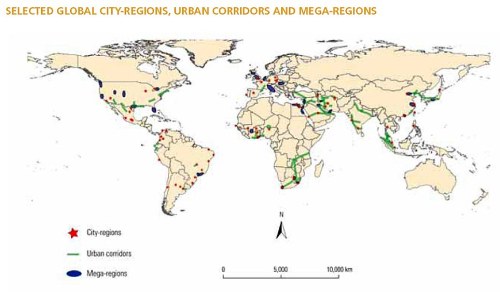The State Of The World Cities report claims that urbanisation is ‘unstoppable’.
World’s largest cities are morphing into overcrowded ‘mega regions’ defined by poverty and pollution, UN report warns
The world’s largest cities are merging into vast ‘mega regions’ which will be characterised by overcrowding, poverty and pollution, a new report warns.
The continuing growth of urban areas is likely to be one of the most significant factors affecting society over the next 50 years, a United Nations agency said.
Such mega regions will stretch hundreds of miles across countries and will be home to more than 100million people. Last year it was confirmed for the first time that over half the world’s population lives in cities.
The State Of The World’s Cities report claims that urbanisation is ‘unstoppable’.
A mega region, which is often two or more cities becoming connected as increasing numbers of towns and ghettos spring up between them, has already been established in the Hong Kong-Shenhzen-Guangzhou region of China where 120million people live.
Eduardo Lopez Moreno, the report’s author, said: ‘The top 25 cities in the world account for more than half of the world’s wealth, and the five largest cities in India and China now account for 50 per cent of those countries’ wealth.’
However, he claims an explosion of mega regions will not necessarily be a bad thing despite warning of ‘further patterns of social and economic exclusion’.
‘They, rather than countries, are now driving wealth,’ Mr Moreno added.
“Research shows that the world’s largest 40 mega regions cover only a tiny fraction of the habitable surface of our planet and are home to fewer than 18 per cent of the world’s population yet account for 66 per cent of all economic activity and about 85 per cent of technological and scientific innovation.’
Anna Tibaijuka, director of UN-Habitat, said: ‘Just over half the world now lives in cities but by 2050, over 70 per cent of the world will be urban dwellers.
‘By then, only 14 per cent of people in rich countries will live outside cities, and 33 per cent in poor countries.’
Related Links


